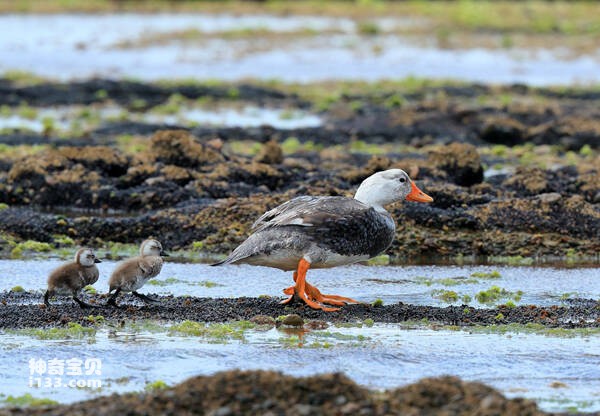Tachyeres leucocephalus
IUCN
LCBasic Information
Scientific classification
- name:Tachyeres leucocephalus
- Scientific Name:Tachyeres leucocephalus,White-headed Steamerduck,Chubut Steamerduck,Chubut Steamer Duck,White-headed Steamer-duck
- Outline:Waterfowl
- Family:
Vital signs
- length:61-74CM
- Weight:2.95-3.8kg
- lifetime:No textual research information is available
Feature
It is the only boat duck species endemic to Argentina
Distribution and Habitat
The white-headed duck is the only species endemic to Argentina and is distributed along the coast in fairly small numbers, mostly around the province of Chubut, south of SAN Jorge and north of Santa Cruz.
Appearance
The white-headed boat duck is 61-74 cm long and weighs about 2.95-3.8 kg. It's a teal that can't fly. When floating on the water surface, the round wings swing like the paddles of the boat when skiing, so the name "boat duck". The male duck has an orange beak with dark spots at the tip; White head; The front breast has a bright patchy red copper color, the upper body and wings are grayish-brown, and the lower abdomen is white. The female duck has a dark grey beak mixed with black and yellow. Iris brown, webbed legs yellow. The young duck has a sea gray bill and black webbed legs.
Details
White-headed duck (Scientific name: Tachyeres brachypterus) White-headed Steamerduck, Chubut Steamerduck, Chubut Steamer Duck, White-headed Steamer-duck, It is a social teal of the family Anatidae.

Whitehead ducks travel along steep cliffs, coastal beaches, saltwater lakes and coastlines. It mainly feeds on animal food such as crustaceans, mollusks, shrimp and small fish. Small groups of a few to more than 20 often feed in shallow water and on the surface of the water. It usually forages in the crevices of rock layers and eats larvae and pupae, aquatic animals, plant seeds, small fish, snails, and crabs.
The white-headed duck breeds near the edges of lakes, rivers, ponds, and marshes in September-October. The combination of pairs is more fixed. Mating takes place in water or on the ground. Nests are built in grass or bushes near water, or in rock crevices or sandy slopes. The nest consists of a small amount of dead grass and a large amount of down feathers, which the female ducks use to line the nest with plants. After laying eggs, she plucks a large amount of down feathers from herself and places them in the nest. 5-10 eggs are laid per nest. After the eggs are laid, the eggs begin to incubate, and the female ducks bear the responsibility alone, the male ducks guard near the nest, and call loudly to warn when in danger. The incubation period is 27-30 days, and the young ducks become sexual early, and after hatching, they are covered with feather, and can swim and dive. Sexual maturity at 2 ages.
Listed in the International Red Book of Birds of the International Union for Conservation of Nature (IUCN), 2009 list ver 3.1 - Threatened (NT).
Protect wild animals and eliminate wild meat.
Maintaining ecological balance is everyone's responsibility!








